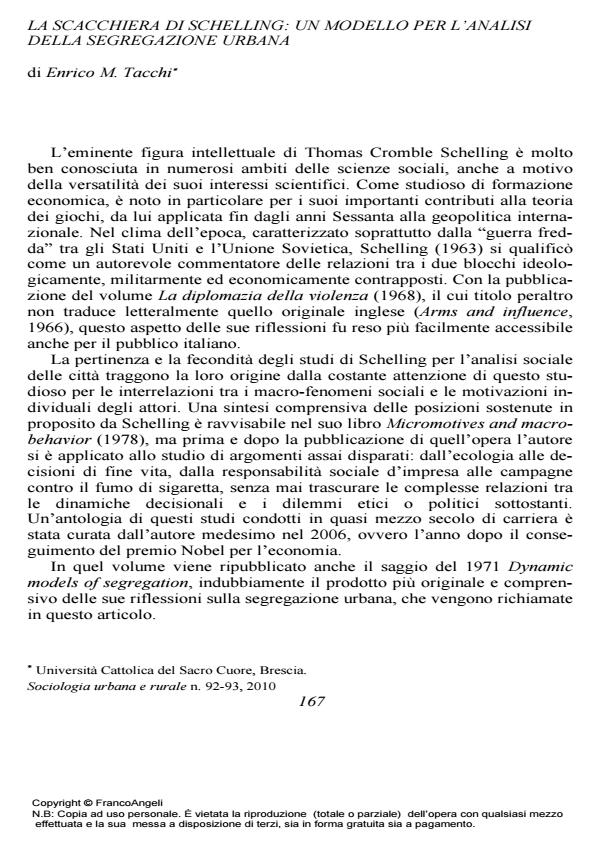Schelling’s checkerboard: a model for urban segregation analysis
Journal title SOCIOLOGIA URBANA E RURALE
Author/s Enrico M. Tacchi
Publishing Year 2011 Issue 2010/92-93
Language Italian Pages 10 P. 167-179 File size 487 KB
DOI 10.3280/SUR2010-092011
DOI is like a bar code for intellectual property: to have more infomation
click here
Below, you can see the article first page
If you want to buy this article in PDF format, you can do it, following the instructions to buy download credits

FrancoAngeli is member of Publishers International Linking Association, Inc (PILA), a not-for-profit association which run the CrossRef service enabling links to and from online scholarly content.
The dynamics of residential segregation in Italy are an emerging issue of interethnic coexistence. This article presents the contribution of Schelling on this topic. In XX century, several authors developed a number of segregation indices. Schelling proposed to study residential segregation using a linear model and a checkerboard model. The metaphor of the line allows to have an unlimited sequence of symbols, and the metaphor of the checkerboard introduces restrictions on the neighbourhoods, with its edges and its corners. The continuing vitality of Schelling’s thought for the study of social segregation in cities mainly depends on his discoveries about the unexpected relationships between individual residential choices and aggregate neighbourhood segregation. So, an integrated city can lead to segregation even if no individual agent prefers the resulting segregation. All that raises serious doubts about the real possibility of public policies to pursue the residential integration by promoting openness and tolerance of diversity.
Keywords: Residential segregation, ethnic preferences, neighbourhood choice, social distance, Schelling’s checkerboard
Enrico M. Tacchi, La scacchiera di Schelling: un modello per l'analisi della segregazione urbana in "SOCIOLOGIA URBANA E RURALE" 92-93/2010, pp 167-179, DOI: 10.3280/SUR2010-092011